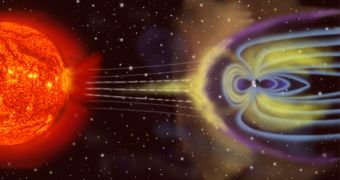The world seems to have woken up just in time, researcher say, when more than two decades ago the United Nations and several leading countries in the world became aware of the first-ever sign of human activity influence on the atmosphere – the hole in the ozone layer. Despite the fact that it took 9 years to get everyone's attention on the matter, 193 nations in the world have signed the Montreal Protocol, the first ever international agreement on regulating pollutants.
Now, an international team of researchers, including scientists from the NASA-operated Goddard Space Flight Center in Maryland, the Johns Hopkins University in Baltimore and the Bilthoven Environmental Assessment Agency in the Netherlands, reveals a simulation of how the Earth might have ended up looking like in 2065, had the Montreal Protocol not been signed.
A paper containing the most significant results of the simulation has been published online in a recent issue of the journal Atmospheric Chemistry and Physics. It holds that DNA-altering UV radiation levels would have gone up by 650 percent, causing sunburns in cities such as Washington and New York within five minutes of exposure. The ozone layer as a whole would have diminished by approximately two thirds around the world, and not only above the South Pole.
In addition, the winter hole in the layer, which can now be recorded in Antarctica, would have become permanent, and another one would have formed at the North Pole over the decades. Cancer incidence in both humans and animals would have skyrocketed, and diseases of the skin would have made stepping out into the light nearly an impossibility. This, the researchers say, is the outcome that we, as a civilization, have avoided by signing a protocol opposed by countless people and companies, each with nothing more than their financial gains in mind.
“Ozone science and monitoring has improved over the past two decades, and we have moved to a phase where we need to be accountable. We are at the point where we have to ask: Were we right about ozone? Did the Montreal Protocol work? What kind of world was avoided by phasing out ozone-depleting substances?” Goddard expert Paul Newman, who is also the United Nations Environment Program's Scientific Assessment Panel co-chair, asks.
“I didn't think that the Montreal Protocol would work as well as it has, but I was pretty naive about the politics. The Montreal Protocol is a remarkable international agreement that should be studied by those involved with global warming and the attempts to reach international agreement on that topic,” Richard Stolarski, also a Goddard scientist, who was one of the first chemists to start asking questions about the ozone layer in the early 1970s, adds.
“Our world avoided calculation goes a little beyond what I thought would happen. The quantities may not be absolutely correct, but the basic results clearly indicate what could have happened to the atmosphere. And models sometimes show you something you weren't expecting, like the precipitous drop in the tropics,” Stolarski shares. “We simulated a world avoided, and it's a world we should be glad we avoided,” Newman concludes.

 14 DAY TRIAL //
14 DAY TRIAL //